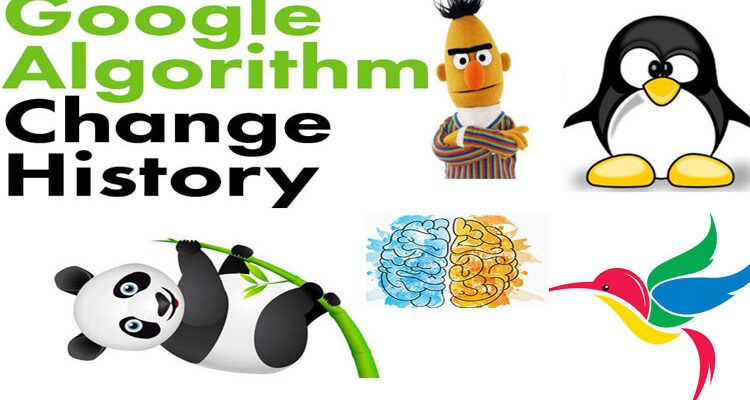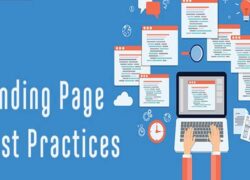Google’s algorithms are a challenging method for extracting data from its search index and delivering the best results for an immediate question. The search engine provides Webpages a result using a combination of algorithms and several ranking signals. The “Google’s Core Algorithm” is frequently referred to by experts, writers and audiences of SEOs as if this were a single function. Actually the Main Algorithm of Google consists of millions of smaller algorithms, all of which work together to give users the best search results. What may mean by saying “Google’s core algorithm” is a collection of algorithms that are used for any search, which is not regarded experimental and which are sufficiently strong to run continuously without major modifications.
Several thousand times a year Google claims to upgrade its search algorithm. Google algorithm improvements are too minimal to remember, in the absolute majority of instances. But Google implements such a fundamental shift every once in a while that it disturbs the approach of search engine forever. No SEO or content marketer can foresee exactly what every potential update looks like. Even some Google workers don’t understand what’s going on with the biggest search engine of the internet.
But think this way: search engines are designed to serve people. People change over time . Simple and clear. And as we change our attitudes, technology grows to fulfill our needs and desires. So, too, they have to change search engines. In this article, 8 of the most significant improvements to search algorithms are counted. We shall discuss the reasons why these improvements have been implemented, how they operate, and what changes have been made in response to our search engine strategies.
Google Panda Update
This update came on 24th February, 2011 with hazards of files duplication, plagiarized or small content; user created junk mail; stuffing of keywords. A so-called “quality score” is allocated to a page by the Panda algorithm upgrade. This score is then used as a classification factor. Initially, Panda had a mild impact, but was permanently integrated into the core algorithm of Google in January 2016. Since then, updates have improved, so damages for Panda as well as recoveries are now being made faster.
Regular tests of information, thin content and keyword filling are conducted on pages. To do so, you need a site rawer, such as a website auditor for SEO Power Suite. You can also prevent a possible penalty by building page without the possibility of unintended keyword filling with the latest Content Editor module of the Website Auditor. The Content Editor analyzes the top competitors’ pages and makes SEO suggestions based on the content that Google search has already successfully achieved. And if your content is being duplicated elsewhere in the Network, use a plagiarism control device such as Copyscape.
Google Penguin Update
This update came of 24th of April, 2014. With hazards including links with over-optimized anchor text; posting spam or non-relevant links. Google Penguin seeks to downgrade websites that have unnatural backlink profile. This update has ended the building of low-cost connections such as the purchasing of link farms and PBNs.
Track your link profile growth and conduct daily inspections with backlink checkers like SEO SpyGlass, in order to stay protected from the effects of the Google Penguin update. You will find a progression map for the growth of your link profile in the dashboard. Look for any odd spikes. They might be the product of your competitors’ negative SEO attempt. Facts Penguin designers recognize are integrated in the Penalty Risk formula of SEO SpyGlass. Explore the Risk Penalty tab and sort from the highest to the lowest risk in your domain authority chart. Links with a risk over 50% should be tested. If suspicious, add it to the disavow file, download it and send that one in the Disavow Links Tool of Google.
Google Hummingbird Update
This update came on 22nd of August, 2013 with hazards such as stuffing words and phrases; mediocre content. The Hummingbird algorithm allows Google to better understand search queries and provides answers that fit the searcher’s purposes in relation to the various words in the query. The Hummingbird algorithm allows a page to classify for a demand, while keywords remain relevant, while it may not comprise the actual words entered by the searcher. This is done through the processing of natural languages based on latent semantic indexing, the co-occurring words and related words.
Widen the analytical keywords and emphasize on keyword definitions. Review the quest, related terms and co-occurring words closely. Google Search and Google Questions linked to Google and Google Autocorrect suggestions are key sources of such information. All these can be found in the Keyword Analysis module of Rank Tracker. Use such insights to better explain and maximize your content in the terminology of your consumer. You’ll be able to win in terms of dedication and SEO by producing detailed content to fulfill the searcher’s purpose.
Google RankBrain Update
This update came on 26th October, 2015. There are few hazards included in this update such as failure to define the query; limited content; weak UX. RankBrain is a member of the Hummingbird algorithm of Google. It’s an automated learning framework that lets Google know the significance of inquiries and serves the best matching search results to answer questions. The third most significant aspect of ranking is Google call RankBrain. Although we do not know how to customize the search results for a consumer in Google, RankBrain is a popular source. Google basically goes beyond the search issue of an individual and takes the wider context into account, such as synonyms, inferred terms and individual browser history.
Use competitive analysis to configure the pages for usefulness and comprehension. With the website auditing tool TF-IDF, a wide range of the top competitors can unveil full lists of related words and terms. Find a way to include these words and you will see your search value significantly improve.
Google Medic Update
This update was introduced by google in 2018, on 4th May. This include some hazards such as complete absence of authority on the domains of YMYL; poor signals of E-A-T. The Google Medic update appeared to impact medical websites and other domains that are connected to life-changing decisions like financing, law and education particularly. Although not expressly proven, Google officials indicated that the updating enforced some of the E-A-T signals from the Quality Rater Guidelines (knowledge and experience, power, confidence)
To present, there seems to be no known Medic upgrade recovery strategy. Some SEOs recommend hiring expert authors to give your website moral authority; others say that the answer is to create entities for your website. However the only trustworthy way to increase your website authority is to extend your backlink profile as you stick to the subject. A backlink analysis tool such as SEO SpyGlass could be used as an effective solution. Moreover suggestions from the competition can be taken from back-link. The backlink difference between your website and the websites of your rivals can be found by SEO SpyGlass. High-level websites that connect with two or three of your opponents provide the right expertise. This means that the pages are not solely associated with any organization but are interested in your niches.
Google BERT Update
Introduced in 2019, BERT is an update accompanying few hazards like terrible quality; insufficient focus; incomplete meaning. Using speech recognition technology to enhance comprehension of search query, text interpretation, identities, and relationships between entities to update Google Algorithms. We saw Panda, Hummingbird and RankBrain updates moving from keywords, and this is the outcome of the BERT update. It helps Google understand more complexities of both queries and search findings.
We eventually witnessed the day when Google really rewarded good writing. As never before, striving for effective copying is critical. This means that you have to quickly go into fluffy words and take an exhibition theme. It is also a good idea to study the organization when making copies, including the right entities helps to establish a material sense.
Google Core updates
These updates were introduced in 2017 and are present to this date. Google began to list larger updates as core updates to Google in 2017. Ever since, there is also less certainty about the changes and the search sections to be changed. SEOs also monitor changes in the post-update rating and try to decide what has changed exactly, but rarely have any definitive findings. Google’s core updates are actually just upgrades on previous Google updates or even packages of smaller updates.
Since the results of core Google updates are often uncertain, you can monitor the SERP background of the keywords that you aim. When the modified update is made, you can review the rankings of your competitors and estimate the factors that contribute. For a monitoring method of your SERP history, go to Keyword Phrases > SERP analytics and press SERP data to start recording your SERP history. This tool begins to track your keywords for the top 30 SERP positions.
Google Mobile Update
This update came on 21st April, 2015. This include certain challenges for instance missing a mobile page variant; low mobile functionality. This mobile search update and corresponding 2018-2020 changes have switched the website from desktops to mobile versions. All web pages are now rated by Google according to the speed and ease of use of its mobile edition.
Optimize your mobile search pages and concentrate on speed and accessibility. Mobile and page speed assessments by Google can help you understand which dimensions of your website can be improved. As part of your overall website evaluation, the checks are built into the website reviewer to ensure that the sites are optimized mobile.
Impact on Search Enginge ranking
Google warned that a site format change can impact rankings, even though URLs and contents remain the very same. Someone asked John Mueller, on Google Office Hours, whether altering the configuration of a web design could impact rankings. Immediately and unambiguously Mueller replied that it could affect rankings. What might confuse some people about this response is that the contents and URL layout were the same. However there are factors to a web design layout that may affect page rankings.
Mueller discusses why modifying the web layout could have an effect on search ratings. This is worth considering before making significant decisions to the layout of a site. Changing your page setup will impact the results of your scan. Some people still regularly work on this in relation to SEO on the site. So stuff like finding out how to properly use titles on a website, how to connect the article properly internally, how to make the article itself more contextual. SEO will certainly be influenced by all this.
Many web designs from the catalog need to be modified so that it is what you wish. Even a web layout called “SEO friendly” would need changes to the CSS and the styling and use of various HTML elements. For example, heading components for the side-bar navigational features are very popular for site previews.
Just because the primary material, such as the posts you have on your blogs and the URLs don’t alter themselves, does not mean that all of this doesn’t change. And the pages can’t pick up. It can certainly have an effect on SEO. But this could be anything positive, or this could be a negative thing. However, you don’t have to stop these changes. Rather make sure you double check that you’re doing all that very well while doing these changes. It can be almost like beginning something again by refreshing a web design layout. Through ones experience, it is important to familiarize yourself with the concept sheets and the protocols so that you can devise the plans what you’d like to delete.
These improvements and modifications to algorithms have revised Search engine rankings. Google’s algorithms, from Panda to BERT and elsewhere, are designed to help searchers find what they are searching for when fighting low content. Suppliers learn what they can do to remain on Google’s strong side through its algorithm improvements.




